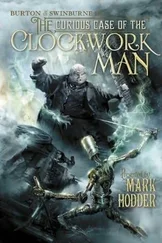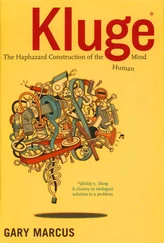Two days later, in the late morning, Joan’s funeral was held at St. John the Baptist Roman Catholic Church, whose school Joan attended. The children from her class were there, and after the service, they all lined up outside as her casket was carried out to say goodbye.
As an investigator of violent crime, you try to be as emotionally detached as possible, not only to maintain your objectivity and critical judgment, but also to preserve your sanity. In fact, having to put myself, as a behavioral profiler, into the head of every victim whose case I work has definitely taken its psychic toll on me throughout my career. Dr. Zugibe’s and Officer Forbes’s reactions to seeing Joan’s small body in the park were understandable. No matter how “professional” you try to be, you can’t not react to something like this.
What kind of a man or monster spontaneously does something like this to a seven-year-old girl? I asked myself as I read through the case file a quarter of a century later. That’s what I would seek to find out.
McGowan repeated his confession to Dr. Noel C. Galen, a forensic psychiatrist who had received his neurology and psychiatry training at Bellevue Hospital in New York and consulted for the New Jersey court system. The day after his indictment, McGowan detailed for Dr. Galen how he answered the door, and when Joan told him what she was there for, said she should come with him downstairs so he could get the money for her. She must have hesitated or resisted, because he admitted grabbing her and forcing her into his downstairs bedroom. Meanwhile, McGowan’s eighty-seven-year-old grandmother, hard of hearing, was watching television upstairs. His mother was at work.
I am not revealing any privileged information from McGowan’s case file or medical records. All of the evaluations and analyses I am citing were contained and published in the appellate decision Joseph McGowan, Defendant-Appellant, v. New Jersey State Parole Board, Respondent, decided by the Superior Court of New Jersey on February 15, 2002.
As he told Dr. Galen, once in the bedroom and “safely” away from the street, McGowan ordered Joan to take off her clothes. Though he said he “never completed the act,” he became sexually excited and ejaculated on his fingers only inches from Joan and then penetrated her digitally. He probably couldn’t wait and did this before she was completely undressed, as her panties were stained with blood. Since he acknowledged he had semen on his fingers, we can’t say for sure whether he “completed the act” or not, but the blood and injuries to her vaginal area indicated a brutal assault.
It was at this point, according to McGowan’s account, that the consequences of his impulsive action dawned on him. “All of a sudden,” he told Dr. Galen, “I realized what I had done. If I let her go, my whole life was gone. All I could think of was just to get rid of her.”
As an investigator, I have to say that from a criminological perspective, this part makes sense to me. In a high-stress situation like this, a “smart” offender will tend to have only one thing on his mind: getting away with his crime. This is apparently what happened with McGowan. Whether Joan lived as long after the first strangulation as Dr. Zugibe speculated is an open question, as is which of McGowan’s attempts to kill her was the successful one. But the general narrative of what happened is not in doubt. According to the transcript of the confession:
I grabbed her and started to strangle her and I dragged her off the bed, tossed her into the corner of my room on the tile floor, off the rugs. She was trying to, you know, scream, and was fighting back. But of course she really couldn’t, since I had my hands around her throat. Uh … she stopped struggling … just sort of lay there. I got dressed. I had been sweating so violently. I went out to the garage. I got some plastic bags to put her in. [Returning from the garage,] I saw that she was still moving, so I began strangling her again and I hit her head on the floor repeatedly. She began to bleed from the nose, mouth, face … I don’t know where. There was blood all over the floor. I then grabbed one of the plastic bags and put it over her head and twisted it tightly and held it there until she stopped.
As I read this in preparation for meeting him, I was thinking to myself: An hour or two earlier, this guy was standing in front of a classroom teaching chemistry to high school students. What led from that Point A to this Point B?
As the confession went on, McGowan described how he lifted Joan’s body and placed it in a plastic trash bag, then wrapped it in an old sofa cover, tied it with cord, carried it to the garage, and stowed it in the trunk of his car—the “new car” Joan had spotted from her front yard around the corner and down the block. He cleaned up her blood as best he could with some old T-shirts. Then he drove the twenty miles or so and dumped the body down the slope in Harriman State Park. He unwrapped it and left it under the rock ledge. He put the plastic bag and the couch cover in a roadside trash can.
When he returned to Hillsdale he joined the neighborhood search for Joan.
“I felt better when I went back to the house,” he told Dr. Galen. “I slept well.”
3
MIND OF THE KILLER
Frank Mikulski, who retired as Hillsdale chief of police in 2006 after forty-two years on the force, was a patrol sergeant when Joan was killed.
“It was the most horrible crime that ever occurred in the borough and it’s the one that still stands out in my mind,” he reflected to the Bergen Record. “This man was a monster, and when something like that happens to a child it’s embedded in the memory of the community and it never goes away. For people here, it’s like Pearl Harbor or 9/11 … You remember where you were and what you were doing.”
Just about everyone who knew either the D’Alessandros or Joseph McGowan remembers where they were and what they were doing when they heard the news.
Robert Carrillo, a math teacher who rode to work with McGowan and one other teacher, had thought of McGowan when Joan went missing. “When the news came over, the first thing I thought of was Joe. I thought, Gee, he lives there. I wonder if he knows her, not that he would have been involved.”
On Easter Sunday, Carrillo had gone to visit his mother in Queens with his wife and daughter. That evening they were returning home when they heard. “We were on the Cross Bronx Expressway and they made an announcement on the radio that they had caught the suspected killer of Joan D’Alessandro, and he was a high school science teacher from Rockland County and they gave his name. And I had to pull off the side of the road. I got physically ill.”
Jack Meschino taught chemistry with McGowan. He and his longtime partner Paul Coletti had socialized with him and other teachers on several occasions. “I remember when we heard,” Coletti recalled, “when we received the phone call, hanging up, and we just sat and looked at each other and said, ‘What!’ ”
“Yeah, it was just unreal,” Meschino agreed. “It was really a shock that he did something like this.” But then he added, “On the other hand, Joe was a strange fellow; he really was. And in retrospect, you think of things. Another thing that struck me was Joe’s humor. There was a big gap in it. Things that he laughed at and thought were funny, the general population wouldn’t laugh or go along with. Very bizarre.
“Joe always walked around with a set of keys—more keys than anyone would have need of. God only knows what they were for. One of the things Joe took it upon himself to do was to check classroom doors after the school day ended. And it was known that he actually turned in some of his colleagues for leaving their classroom doors unlocked. This was not in his line of duties. He had no administrative responsibilities. The only people he tried to ingratiate himself with were the administrators.”
Читать дальше












